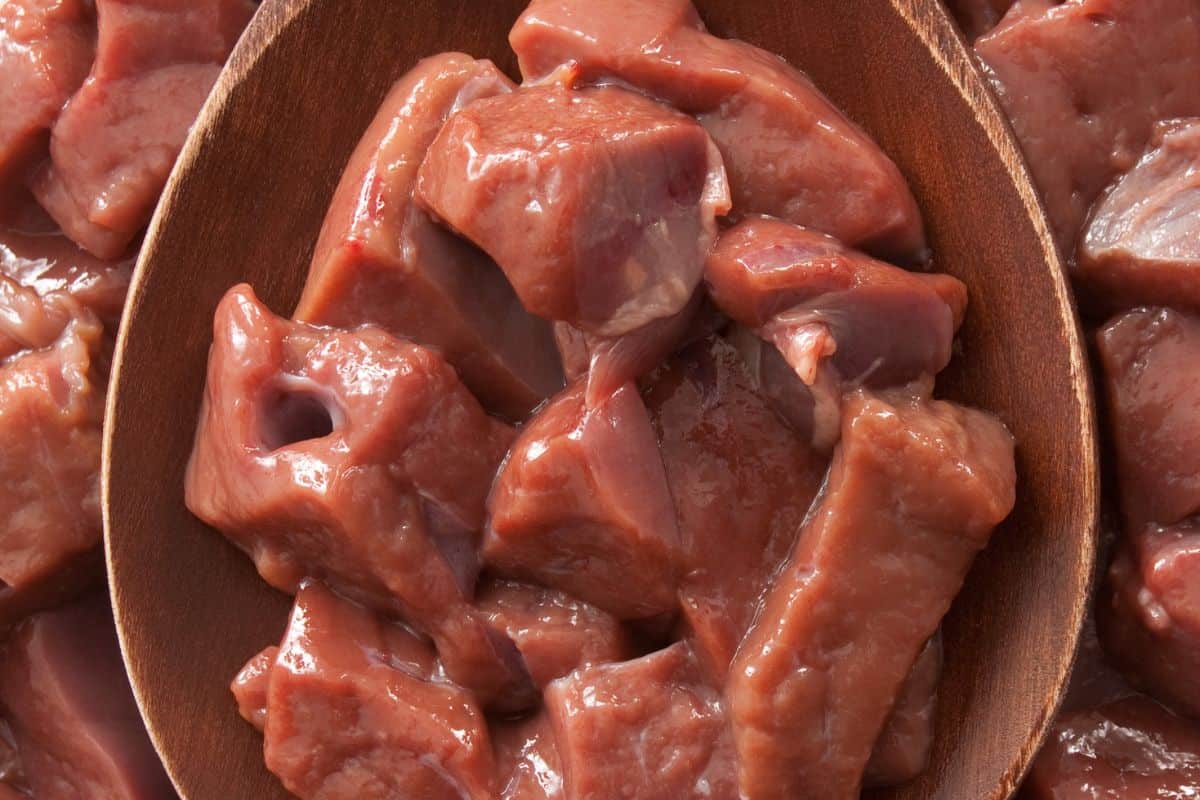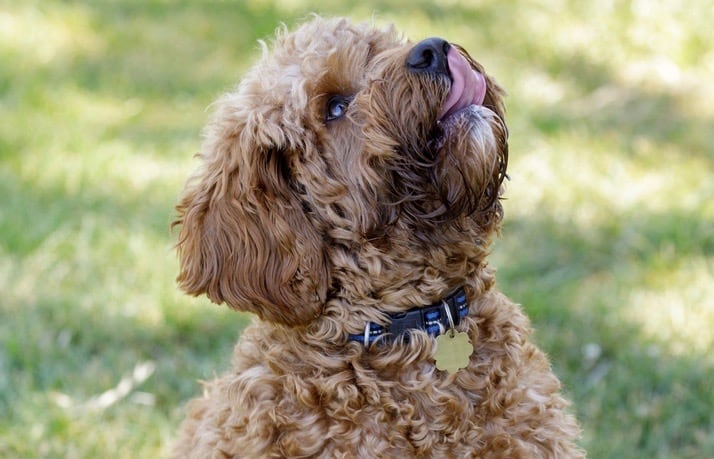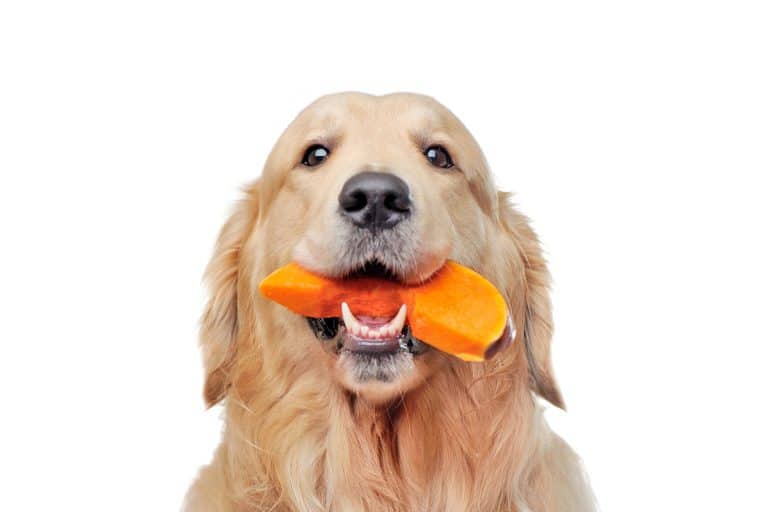Raw Liver For Dogs: All Your Questions Answered
When it comes to raw liver for dogs, there are so many unanswered questions out there. For example, what’s in the liver? How do you feed raw liver to dogs? Where do you buy raw liver from?
If you have any questions about dogs and raw liver, then this is the article for you. We’re going through all of the most important questions that have been asked to help you understand raw liver better and how to give it to your dogs.
Let’s get right into the questions, shall we?
Is Liver A Type Of Meat?
Yes, liver is a type of meat that comes from many different animals. The liver is an organ that can be eaten by humans and animals alike. When it comes to food terminology, the liver is a secreting organ.
A secreting organ is one that lets go of a substance. Other organs that fall into the category of secreting organs include:
- Kidneys
- Pancreas
- Brain
- Spleen
- Eyes
- Ovaries and testicles
- Thymus
All of these things are considered meat as they come from a meat source – a body. Animals would usually eat other animal livers rather than their own species or humans. Humans also tend to eat animal livers rather than those that have come from the human body.
Organs that do not secrete any substances are called muscle meat when it comes to feeding dogs raw meat. This is so we don’t get confused by thinking all organs are secreting organs and therefore feeding our dogs the wrong amounts of them.
What Is In Raw Liver?

Liver is often referred to as Mother Nature’s multivitamins thanks to its amazing amount of nutrients within it. Liver is particularly fortified in Vitamin A and is a great source for anyone with a deficiency.
Vitamin A is very important to the body as it supports the digestive system in dogs as well as their reproductive system. It is an antioxidant that can nourish and remove harmful substances within the body.
A fun fact about organs is that wolves instinctively know how rich in nutrients organs are, and therefore eat them first from their prey. As dogs are a distant relative to wolves, perhaps this is the reason why dogs like liver so much!
Can Dogs Eat All Types Of Raw Liver?
Dogs can eat the liver of many different animals, and we cannot see a reason why they would not be able to eat the liver of all animals. Here are some of the most common animals that dogs will eat the liver of:
- Chicken
- Elk
- Beef
- Rabbit
- Turkey
- Pork
- Deer
- Duck
- Lamb
- Ostrich
- Goat
It’s often recommended that you switch between different types of liver for your dog so that they can benefit from all of the different nutrients from each one.
For example, chicken liver is not as nutritious as livers from other animals, but it is the easiest to source and therefore will be most commonly used.
While there’s nothing wrong with giving your dog chicken liver, it would be beneficial for you to swap out the animals to give them a wider range of nutrients from their food.
The only issue with this is that it can be difficult to source other types of liver, but you should be able to find some at the butchers or local farms.
Some dogs are allergic to different types of meat, so make sure that you only stick to protein sources that your dog can tolerate.
For example, chicken is one of the most common allergens in dogs! Yet so much food is centered around chicken and poultry.
If your dog is often intolerant of protein sources, rabbit liver is likely going to be your best bet as it is considered a hypoallergenic animal.
Do All Dogs Like Raw Liver?
Just like humans, all dogs have different tastes and favorite flavors. Some dogs just don’t like the taste or texture of raw liver. We think that this is fine, as there are other ways to get raw liver into your dog (such as treats or cooked liver).
However, if you’re set on feeding your dog a raw diet, then you might just have to give them some tough love. As liver is an essential part of a raw food diet, it shouldn’t be substituted for anything else. Dogs need liver within their daily diet to continue thriving.
With that being said, the good news is that dogs only need around 10% of their diet to be liver, and this isn’t much. For example, a 10 pound dog will only need 0.2 ounces of liver each day, and a 50 pound dog will still only need 1 ounce a day!
If your dog doesn’t like liver, the easiest way to incorporate it into their diet without them turning their nose up at it is to puree the liver and mix it into the food.
You could also chop it up finely and hide it within other pieces of chopped raw meat that they do like. While this will often work for the majority of dogs, some are smarter than others and will still refuse to eat the liver.
If this is the case, then it’s time to bring out the big guns! Dogs cannot resist green tripe – and the best news is that it is so strongly scented that it should cover any trace of the liver!
How Much Raw Liver Do Dogs Need Every Day?
Many people are unaware of the fact that adult dogs require 10% of their daily diet to be made up of secreting organs. Half of that should be liver, meaning that an adult dog needs 5% liver in their daily food.
The other 5% of this requirement can be made up of another secreting organ like the ones that we named at the beginning of our article.
Puppies need more secreting organs in their diet, with a requirement of 12% every day. 6% of this should be liver, while the other 6% can be made up of other secreting organs.
Working Out How Much Raw Liver Your Dog Needs Every Day

While the information above is a very rough idea of how much liver your dog will need, there is a better way to work this out that is more tailored to your dog.
You will need to know the weight of your dog to work this out, so get them on the scales!
Take your dog’s body weight and divide it by 100, before multiplying by 2.5.
2.5% is a maintaining percentage to keep your dog at their current weight. If your aim is to increase their body weight, multiply by 4.
This higher percentage is good for pregnant dogs or working dogs. Don’t go beyond 4% though, as you might end up with health issues such as dog obesity.
Now that you have used the simple equation above, it will leave you with the amount of food that your dog needs to consume a day.
For example, if your dog was 150 pounds, here is how we would work out their daily food allowance:
150 / 100 = 1.5
1.5 X 2.5 = 3.75 pounds
3.75 pounds to ounces is 60 ounces, as one pound equals 16 ounces.
Now remember that only 5% of this food allowance needs to be liver, so we have to find 5% of their food requirement. To find 5% of something, times the number by 0.05.
60 x 0.05 = 3.
So, 3 ounces of your dog’s daily meals need to be made up of liver. Another 3 ounces need to be made from another secreting organ.
If you make your dog’s meals at home and meal prep for them, you can simply add this to their meals. If a dog has two meals a day, add 1.5 ounces of liver to each meal to ensure that they’re getting their liver requirement.
How Do You Feed Liver To A Dog?
The best way to feed liver to a dog is by serving it raw. This can either be made at home or premade from a trusted brand.
There are many brands out there that specialize in raw food for dogs, and these brands often also sell liver for you to add to your dog’s meals.
Preparing it at home can be more time consuming than buying it online. Some people also don’t like the thought of touching raw liver with their own hands and preparing it.
If you’re squeamish about meat, you might prefer to buy it pre-made. However, this can be more expensive than doing it yourself.
Let’s take a look into both of these options to see which is the better one for you and your dog.
Homemade Raw Liver
Preparing raw liver at home for your dog could not be easier. All you have to do is cut the liver up into small pieces and put them within your dog’s food at meal times.
Liver is incredibly soft and tender, so you can even tear it into smaller pieces if you’d prefer, saving you even more time.
However, you might find that your dog actually refuses to eat liver because of the change in taste or texture. This is particularly true for smaller dogs as they don’t like changes within their diet.
If you find that your dog is refusing to eat their raw liver, you can always try to cut it up even smaller or puree it with some water. Mix the liver into the food well so that it blends together nicely.
This should prevent your dog from noticing a difference and eating it all up. Make the pieces a little bigger each meal and soon your dog won’t mind the bigger chunks of liver in their bowls.
Pre-Made Raw Liver
Any trusted raw food brand would surely add raw liver into their meals as it is an essential part of a dog’s diet. So, you can’t go wrong as long as you choose a reputable brand who is trusted by many.
They will include the raw liver within the meals so that you don’t have to touch it yourself.
Can You Cook Raw Liver At Home For Dogs?
Yes, raw liver can be cooked. This might make them more willing to eat it so that they can benefit from the nutritional value.
If your dog is fussy with their raw liver, you might want to cook it first to get them used to the taste before reintroducing it to them again raw.
Some dogs just do better with cooked foods than raw foods, such as dogs that have compromised immune systems due to illnesses like cancer. You know your dog best, so determine whether cooked or raw liver is best for them.
If you’re going to cook liver for your dog, make sure that you are not cooking any bones with it. Dogs should never have cooked bones as the high temperatures can make the bones brittle and sharp.
This can cause damage to their internal organs, so never give a dog a cooked bone!
Is There An Alternative?
Yes, there is an alternative to cooking liver! If you don’t want to have to deal with raw liver at all, you can also opt for store-bought freeze-dried or dehydrated liver dog treats.
But make sure that the only ingredient within the treat is liver so that you’re not giving your dog something unhealthy.
Always use a trusted brand that uses good quality liver for their treats. The only problem with this method is that you won’t know how much of your dog’s daily food intake is liver.
Plus, if you did work this out and gave your dog the right amount, liver dog treats can get very expensive.
How Do You Store Raw Liver Safely?
You can either refrigerate or freeze liver. Thawed liver can remain in the fridge for up to four days before it goes bad. You can actually freeze liver up to a full year if you need to!
Fresh liver in the refrigerator might last slightly less time as it is becoming less fresh by the minute. So, if you want to store liver for the longest time possible, we would recommend freezing it in small pieces.
Freezing it in ready to eat pieces is better than freezing it whole as you can remove a portion size without having to refreeze the entire thing that you don’t want to use. Simply take out a few chunks and thaw them in the fridge.
Thawing chunks is also much quicker than thawing an entire whole liver, so you’ll be saving yourself time.
The best way to freeze your liver chunks is to either freeze them in separate portions, or flash freeze them before storing them in the freezer.
Choosing one of these methods will help to prevent the liver sticking together when it’s freezing so that you don’t have a hard time separating the pieces to thaw only a few at a time.
Can You Freeze Liver More Than Once?
The answer to this question is up to you, as everyone has their own opinions on refreezing food.
We have personally frozen liver more than once and never had a problem with it. But again, it’s up to you whether you decide to do this or not!
Where Can I Get Raw Liver For Dogs?
There are a number of places that you can get raw liver for dogs – in fact, it’s quite easy to source when you know where to look. Liver will often either be sold in grocery stores, local farms, or butchers.
Alternatively, you might know some hunters that are willing to share their caught liver with you rather than throwing it out. Let’s take a quick look into these options.
Grocery Stores
Most stores will sell either chicken or beef liver for you to buy. Simply head down to your local store and ask a worker where they stock them. You should then be able to buy as much as you need.
Local Farms
The US has recently seen an increase in ostrich farms, so there’s a good chance that there’s one located not too far from you.
Most farms sell the heart and liver of their animals, so you can give them a call and see if they have any in stock.
Hunters
Hunters will often have deer liver up for grabs. However, if you choose to use this then you should freeze the liver for three weeks before feeding it to your dog. This removes any parasites on the liver and makes it safe for your dog to consume.
What Would Happen If A Dog Ate Too Much Liver?
The most common side effect of eating slightly too much liver in dogs is loose bowels. However, if they ate an incredible amount of liver, there is the possibility that they would experience Vitamin A toxicity.
Symptoms of this include:
- Vomiting
- Diarrhea
- Lethargy and weakness
- Tremors
- Paralysis
- Death
So, it is incredibly important to not overfeed your dog raw liver. Make sure that you are measuring out the correct amount for their body weight using the equations that we mentioned earlier in the article.
If you suspect that your dog has eaten too much liver, take them to get checked out by a veterinarian as soon as possible. Don’t wait for symptoms of Vitamin A toxicity to show, as they can move quickly and you need to work fast.
It is always best to get them checked over by a professional who can give you advice on what to do next.
Summary
There you have it – (hopefully) all of your questions about feeding raw liver to dogs answered!
Liver is very important in a dog’s diet, so it’s beneficial to add it to their raw food every day. Chop it up, puree it, or even cook it – just get it in their diet!
You can find raw liver from many places around you, and it’s always best to mix up the type of liver that you’re feeding your dog. You can either prepare it at home or buy it pre-made!






